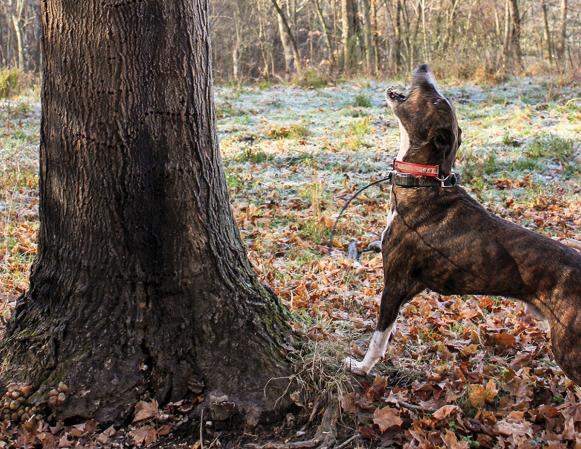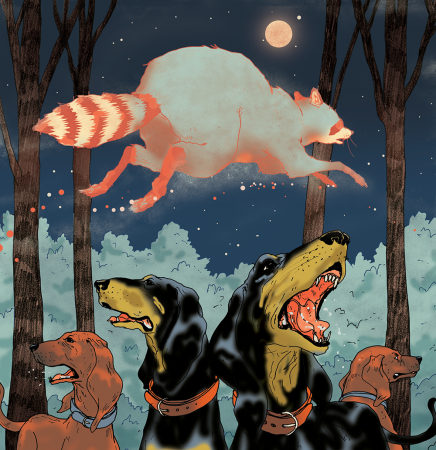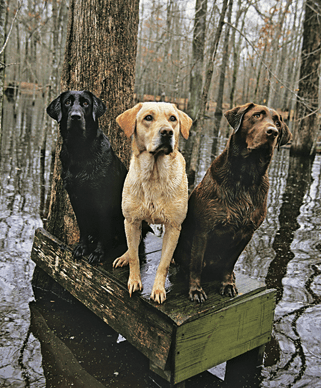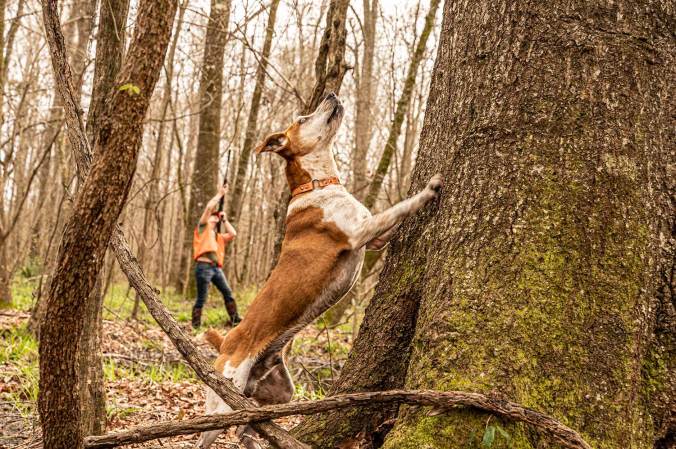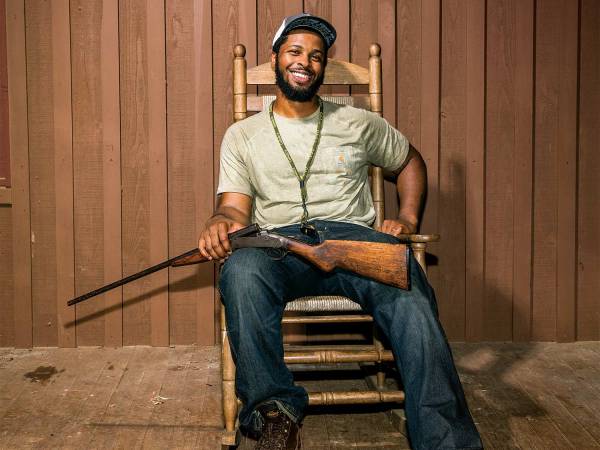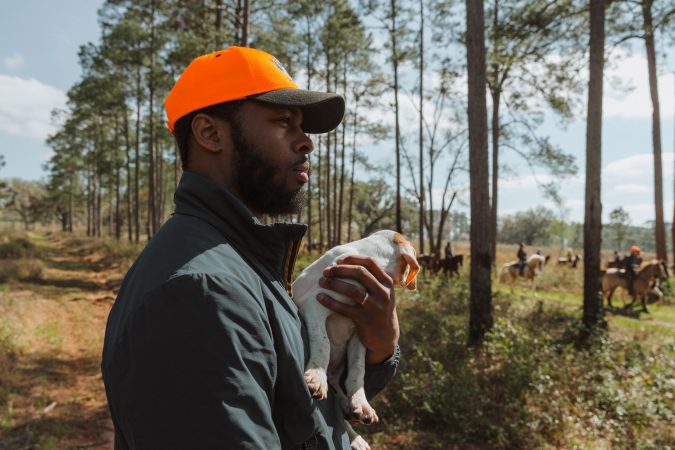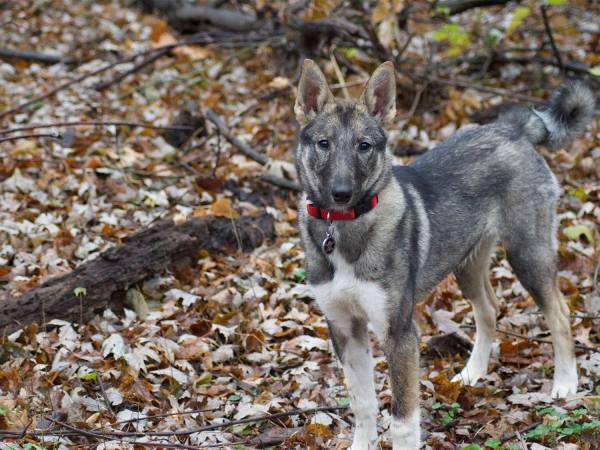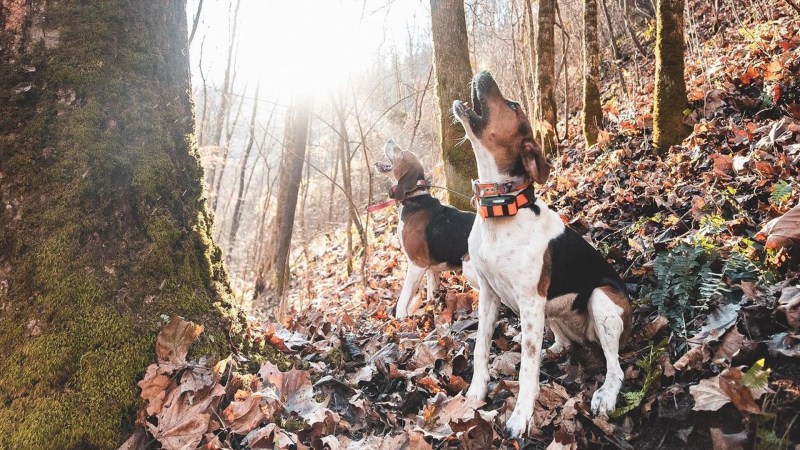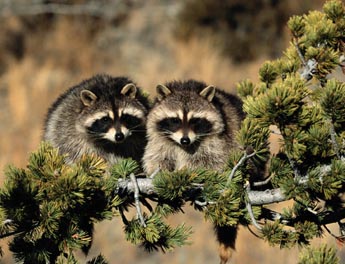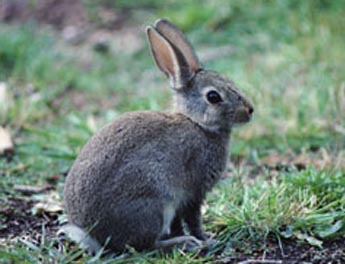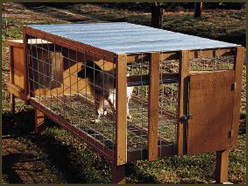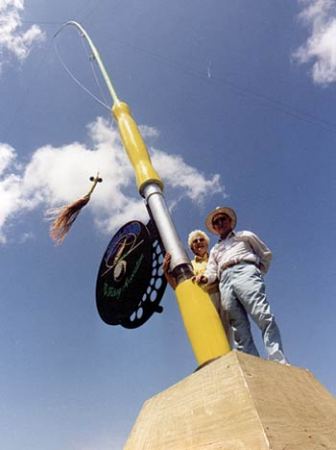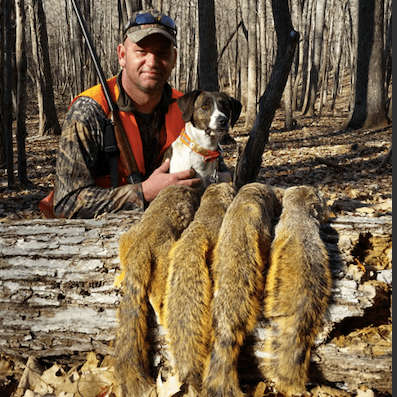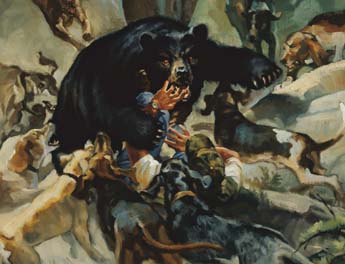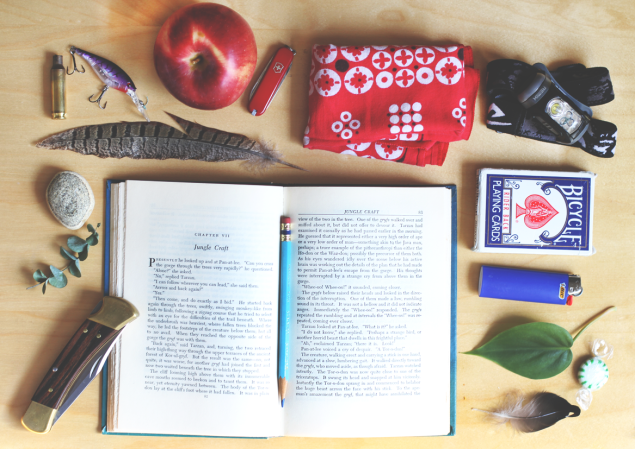We’ve seen the bumper stickers: Coon hunters do it all night. For Jerry Shaffer, the sticker should have read: Coonhound trainers do it all day and night. The hang-up was his 11-acre starting pen. Shaffer had to stay with the youngsters because if a coon didn’t show itself promptly the pups might become bored and wander back to the gate. End of session. And Shaffer couldn’t afford to cool his heels in the pen when he needed to be working more advanced youngsters in the 100-acre enclosure.
Shrink the Pen: Shaffer’s solution was to reduce the pen size and improve the main attraction. He took about 20 feet of 6-foot-wide, 2- by 4-inch number 12 wire mesh fencing, rolled it into a 20-foot tube secured with hog rings and fastened it between two trees about 12 feeet overhead. The coon sleeps in a box at one end, while food and water are on a platform at the other.
Fake ‘Em Out: The setup is ringed by about 300 feet of wire fencing, which forces the young hounds to stay within a 50-foot radius, where they’re sure to notice the coon running to eat and drink. They can’t see the coon on the platform, but they can tree by scent–if they already know what a coon looks and smells like and believe it to be a worthy adversary to bark at.
Get Closer: The best way to awaken that interest is closer contact. Shaffer cut a 12-foot section of den tree with a hole at the bottom and set it up near his house, again surrrounded by 300 feet of fencing. This time, a 75-foot wire tunnel was placed on the ground, fastened to a feeder at one end and over the den hole at the other. A platform was fastened high in the hollow tree for two boar coons to sleep on because their vocal squabbles get the attention of pups running free in the small enclosure. Brave in groups, the pups investigate, smell and chase when a coon runs out to eat. In time, they tree when it returns to the den. All on their own, the pups prepare for the suspended tunnel, where brief glimpses of coon make them more dependent on scent than sight for barking treed. This is important. Although big-game hounds commonly see their prey, coonhounds rarely do.
Roll Tape: Shaffer uses video cameras to monitor individual progress. When pups are ready, he takes them in the daytime to the 100-acre enclosure, where a number of automatic feeders are placed in trees about 12 feet aboveground. Well-fed raccoons lay trails to nearyby trees, which the hounds are allowed to bark up only briefly to minimize sight treeing. Deer are encountered as well. Dogs that give chase are corrected by e-collar. When this is under control, the hounds begin hunting strictly at night.
The starting phase has gone smoothly, and owners easily finish their dogs by hunting during the season. (shafferstrainingfacility.com; 304-965-6824)
Have Lunchbox, Will Travel
The MuzzleLoader, from GBPet, looks like a small, sturdy suitcase. When opened, it separates into a 7.6-quart canteen and a double dish, one side with a cover to keep 5 cups of food dry, and the other for water. This nifty device is a compact essential for hunting trips near or far, dog meets, tests or any other time your best buddy goes along. ($18; 888-877-4738; gbpet.com)

